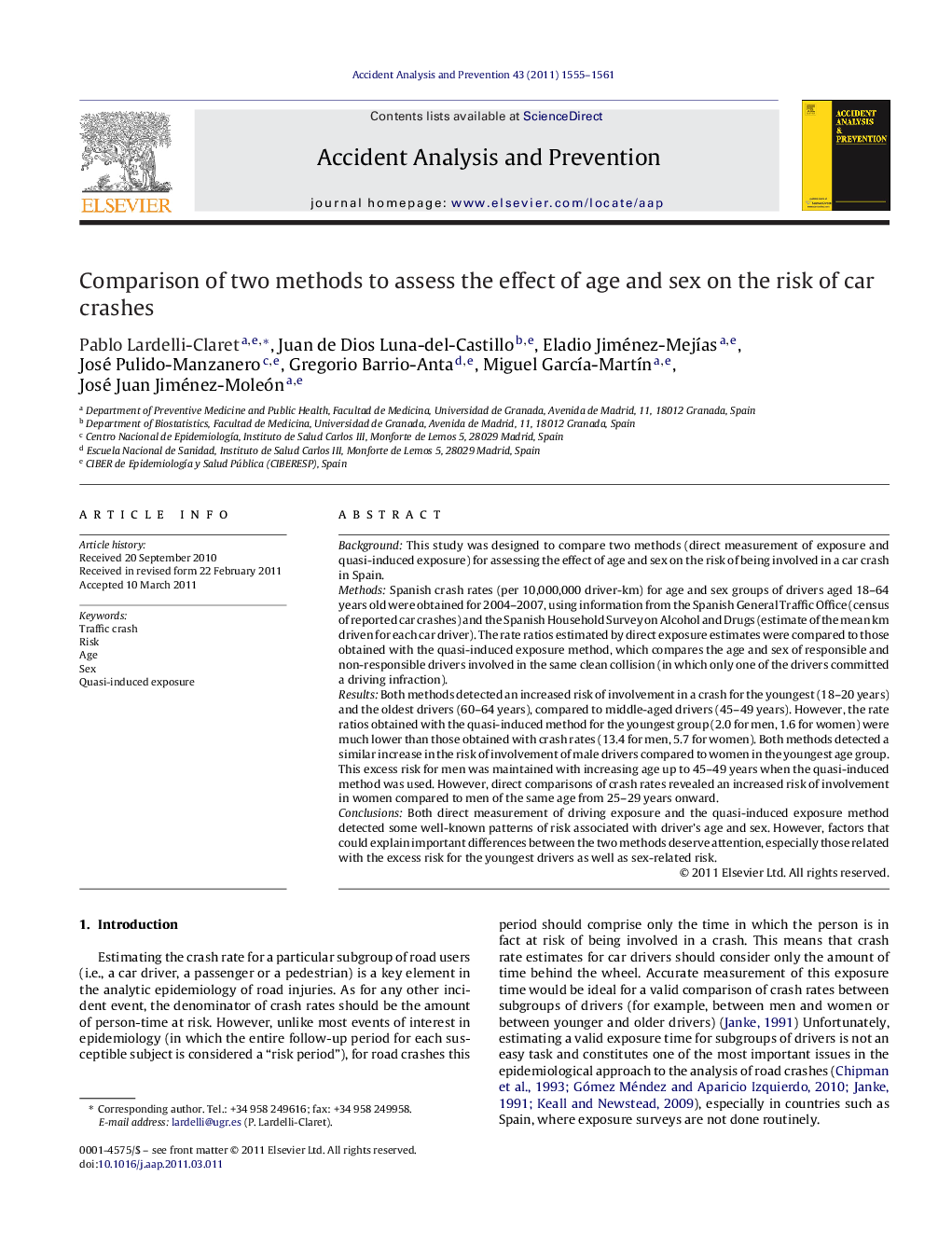| کد مقاله | کد نشریه | سال انتشار | مقاله انگلیسی | نسخه تمام متن |
|---|---|---|---|---|
| 573018 | 877387 | 2011 | 7 صفحه PDF | دانلود رایگان |

BackgroundThis study was designed to compare two methods (direct measurement of exposure and quasi-induced exposure) for assessing the effect of age and sex on the risk of being involved in a car crash in Spain.MethodsSpanish crash rates (per 10,000,000 driver-km) for age and sex groups of drivers aged 18–64 years old were obtained for 2004–2007, using information from the Spanish General Traffic Office (census of reported car crashes) and the Spanish Household Survey on Alcohol and Drugs (estimate of the mean km driven for each car driver). The rate ratios estimated by direct exposure estimates were compared to those obtained with the quasi-induced exposure method, which compares the age and sex of responsible and non-responsible drivers involved in the same clean collision (in which only one of the drivers committed a driving infraction).ResultsBoth methods detected an increased risk of involvement in a crash for the youngest (18–20 years) and the oldest drivers (60–64 years), compared to middle-aged drivers (45–49 years). However, the rate ratios obtained with the quasi-induced method for the youngest group (2.0 for men, 1.6 for women) were much lower than those obtained with crash rates (13.4 for men, 5.7 for women). Both methods detected a similar increase in the risk of involvement of male drivers compared to women in the youngest age group. This excess risk for men was maintained with increasing age up to 45–49 years when the quasi-induced method was used. However, direct comparisons of crash rates revealed an increased risk of involvement in women compared to men of the same age from 25–29 years onward.ConclusionsBoth direct measurement of driving exposure and the quasi-induced exposure method detected some well-known patterns of risk associated with driver's age and sex. However, factors that could explain important differences between the two methods deserve attention, especially those related with the excess risk for the youngest drivers as well as sex-related risk.
► The consistency of quasi-induced exposure methods to assess the risk of involvement in a crash remains uncertain. We tried to shed light on this issue by comparing this approach with a method based on direct estimation of exposure (in driver-km) to estimate the effect of driver's age and sex on the risk of involvement in a road crash.
► Both direct measurement of exposure and the quasi-exposure method detected an association of high risk of involvement in a crash with younger age (compared to middle-aged drivers) and with the young male driver subgroup (compared to same-aged women).
► However, excess risk in the youngest drivers was much more pronounced in direct estimates of exposure than in estimates obtained with the quasi-induced method. Furthermore, direct estimation showed an excess risk for middle-aged female drivers (compared to male drivers) that was not observed with the quasi-induced exposure method. These differences between the two methods merit additional study.
Journal: Accident Analysis & Prevention - Volume 43, Issue 4, July 2011, Pages 1555–1561